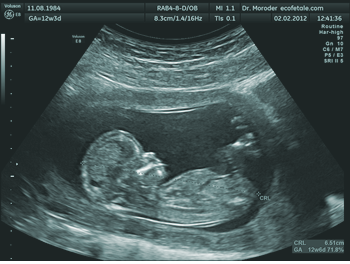GCSE Questions - Waves Q9. Ultrasound can be used to produce an image of an unborn baby.
(a)
[1 mark]
[1 mark]
[1 mark] (b) A parking sensor on the back of a car emits an ultrasound pulse and receives the reflected pulse as shown in the graphic below.
Complete the sentence to describe how the time taken for the reflected pulse to return to the car changes as the car moves. As the car moves closer to the wall the reflected pulse takes less (a shorter) [1 mark] (c) The parking sensor emits an ultrasound pulse. The reflected pulse is received 0.006 seconds later. The speed of ultrasound in air is 330 m/s. Calculate the distance from the car to the wall. Let d be the distance from the wall In between emitting and receieving the reflection the sound travels a distance 2d Speed = distance travelled/ time taken 330 = 2d/0.006 d = 330 x 0.006/2 d = 0.99 m [3 marks] (d) There are four parking sensors spaced equally along the back of the car. Suggest one advantage of using four sensors instead of just using one sensor. Any one from:
[1 mark] (Total 8 marks) |
Follow me...
|







